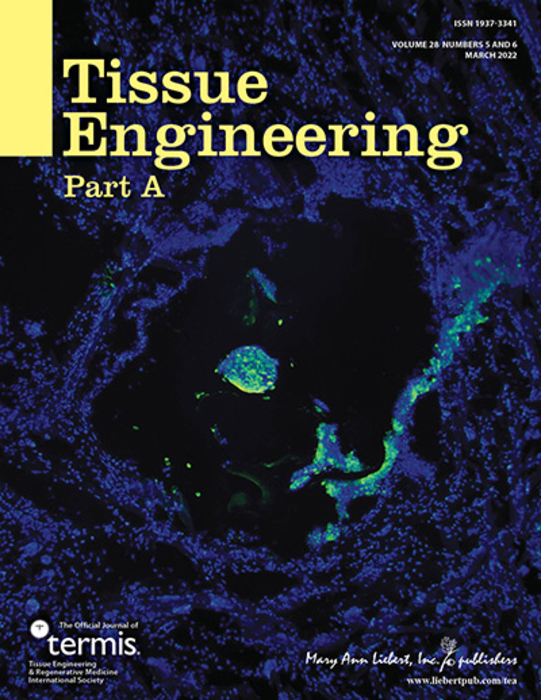A new study compares the regenerative potential of blood/bone marrow aspirate concentrates obtained from arterial blood, venous blood, and bone marrow aspirate. The study, conducted in rabbits, is reported in the peer-reviewed journal Tissue Engineering Part A. Click here to read the article now.

Credit: Mary Ann Liebert, Inc., publishers
A new study compares the regenerative potential of blood/bone marrow aspirate concentrates obtained from arterial blood, venous blood, and bone marrow aspirate. The study, conducted in rabbits, is reported in the peer-reviewed journal Tissue Engineering Part A. Click here to read the article now.
Blood concentrate material such as platelet-rick fibrin (PRF) is used in clinical practice to promote tissue regeneration in the fields of dentistry, orthopedic surgery, and plastic surgery. In the current study, Masako Fujioka-Kobayashi, from The Nippon Dental University, Tokyo, Japan, and colleagues, introduce a new type of solid bone marrow aspirate concentrate (sBMAC) material and show its regenerative potential in both gingival fibroblasts and osteoblasts in vitro compared with that of conventional PRF.
sBMAC induced significantly greater migratory potential than PRF obtained from either arterial or venous blood and also demonstrated promoted greater cell growth.
According to the investigators, “sBMAC treatment led to greater cell migration, angiogenesis, collagen synthesis, and higher osteoblast differentiation potential than Ar-PRF or Ve-PRF. Therefore, it was suggested that sBMAC might be a new candidate to promote wound healing and bone regeneration.”
“Koyanagi and coauthors at The Nippon Dental University have elegantly shown that solid bone marrow aspirates may be a promising therapeutic approach for promoting wound healing, particularly in bone settings. This exciting work brings to light the increasing use of naturally derived materials as the basis for novel therapeutics,” says Tissue Engineering Co-Editor-in-Chief John P. Fisher, PhD, Fischell Family Distinguished Professor & Department Chair, and Director of the NIH Center for Engineering Complex Tissues at the University of Maryland.
About the Journal
Tissue Engineering is an authoritative peer-reviewed journal published monthly online and in print in three parts: Part A, the flagship journal published 24 times per year; Part B: Reviews, published bimonthly, and Part C: Methods, published 12 times per year. Led by Co-Editors-in-Chief Antonios G. Mikos, PhD, Louis Calder Professor at Rice University, Houston, TX, and John P. Fisher, PhD, Fischell Family Distinguished Professor & Department Chair, and Director of the NIH Center for Engineering Complex Tissues at the University of Maryland, the Journal brings together scientific and medical experts in the fields of biomedical engineering, material science, molecular and cellular biology, and genetic engineering. Leadership of Tissue Engineering Parts B (Reviews) and Part C (Methods) is provided by Katja Schenke-Layland, PhD, Eberhard Karls University, Tübingen and John A. Jansen, DDS, PhD, Radboud University, respectively. Complete tables of content and a sample issue may be viewed online at the Tissue Engineering website. Tissue Engineering is the official journal of the Tissue Engineering & Regenerative Medicine International Society (TERMIS). Complete tables of content and a sample issue may be viewed on the Tissue Engineering website.
About the Publisher
Mary Ann Liebert, Inc., publishers is known for establishing authoritative peer-reviewed journals in many promising areas of science and biomedical research. Its biotechnology trade magazine, GEN (Genetic Engineering & Biotechnology News), was the first in its field and is today the industry’s most widely read publication worldwide. A complete list of the firm’s more than 100 journals, books, and newsmagazines is on the Mary Ann Liebert, Inc., publishers website.
Journal
Tissue Engineering Part A
DOI
10.1089/ten.TEA.2021.0225
Method of Research
Case study
Subject of Research
Animals




